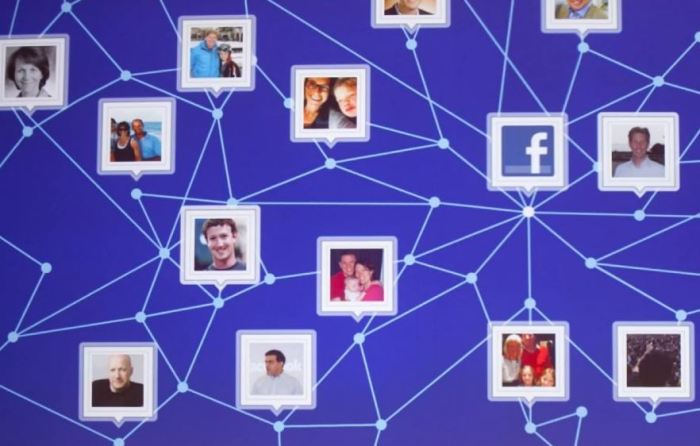With Sarasota Summer Showcase just around the corner (June 27), we thought this article from The Washington Post was very relevant and helpful for our members who are not very keen with the ins-and-outs of networking.
Most species hang out only with family members. Everybody else is a potential enemy. Good ol’ Homo sapiens have been successful because we’ve extended the definition of family by using mutually agreed upon stories — “fictive kinship” as Israeli researcher Yuval Noah Harari points out.
Families are not merely blood relatives. We’re in many families: We’re Americans. We’re IBM employees. We’re on the same softball team. Most simply, we’re friends. This allows us to collaborate on a scale that’s impossible for other animals. This is the secret to our success as a species. It’s also the secret to your success as an individual: friendship.

Even so, you might feel awkward about going up to that person who could be important to your career with what feels like the thin veneer of “friendship.” But that’s a false distinction. One of the primary things every romantic couple has in common is not magic, it’s proximity. It’s really hard to fall in love when you never encounter each other.
Sure, reaching out may feel awkward at first, but there’s no need to be afraid of networking. The truth is, we often underestimate by as much as 50 percent how much others are willing to help us when asked. Remember, the rule of thumb is simple when making friends: Assume other people will like you, and they probably will. Here are some other tips to help you become an effective networker.
Start with the friends you already have
Research shows that one of the quickest and easiest ways to boost your network isn’t to pass your business card out on street corners; it’s to reconnect with old friends. And there’s no sleazy element to it at all — they’re already your friends. You just haven’t caught up with them in a year. Go through your Facebook friends list, your LinkedIn connections, or your address book, and send a few emails every week, asking, “What’s up?” Research shows that those dormant friendships can actually be bigger boosters to your career than any new connections you make.
Find your ‘Superconnectors’
Not all people in a network are created equal, contact-wise. Northwestern University professor Brian Uzzi and journalist Sharon Dunlap did research and found that there’s an 80/20 rule of sorts in networking. You probably met the vast majority of your friends through a handful of “superfriends” — your buddies who are the most socially connected. So when it comes to trying to expand your network and make new friends, do what works. Reaching out to these “superfriends” and saying, “Whom do you know that I should meet?” will produce disproportionate results.
Make the time and the budget
People say they want to increase their networks but few really make it a priority, dedicate time for it, or commit something specific to it, such as “I’m going to allocate an extra $50 a week to having coffees and lunches in which I connect with people.” Entrepreneur and best-selling author Ben Casnocha saw that top networkers committed a certain amount of time and money to their networking goal so that when opportunities came up, they didn’t hesitate.
Join groups
No, not some corny “networking group.” Again, that’s awkward and borderline gross. Do you know a bunch of friends who have lunch every week? How about a group that watches football every Sunday? A book club at work? These are fun, passive ways to make sure you stay in the mix and connect with others organically.
Always follow up
We all meet people but we rarely take the time to follow up and actually begin a friendship. Analyzing 8 million phone calls between 2 million people, researchers at Notre Dame found that what makes close friendships endure is simply staying in touch every two weeks. Now, you don’t need to connect with people that often if they’re not close friends, but the principle still stands: Checking in every now and then matters.
Just like your mother taught you, say thank you
Research from the journal Cognition and Emotion shows that gratitude is the quality that makes people want to spend more time with you. Gratitude is the tactical nuke of happiness and the cornerstone of long-lasting relationships.
If it’s that simple — just taking time to say thanks — why don’t we all do it? Researchers call it “hedonic adaptation.” I call it “taking things for granted.” When you first get your new house, it’s the greatest thing that ever happened to you. A year later, it’s that money pit that needs a new roof. The joy of the new never lasts. And this happens with everything.
Making time to feel gratitude for what you have undoes the hedonic adaptation. And what’s the best way to do this? Thank the people around you. Relationships are the key to happiness, and taking the time to say “thanks” renews that feeling of being blessed.
So here is my final recommendation: Do a gratitude visit. This isn’t just some cute idea. Research by psychology professor Martin Seligman at the University of Pennsylvania shows that doing a gratitude visit is one of the most powerful ways to feel happier and to make someone else happy in the process.
It’s quite simple. Seligman says to write a letter of gratitude to someone. Make it concrete; say what they did for you and how it affected your life. Then set a time to sit down with them, but don’t say why. When you meet, read them the letter. Both of you will be happier for it.
An email or text is fine, too. Studies show gratitude gives our friendships a “booster shot” and predicts relationship satisfaction. Gratitude doesn’t just help friendships. It also improves work relationships. One study showed that although we say “thanks” regularly to family, only 15 percent show gratitude at work. And 35 percent of those surveyed said their boss never says it.
You’re not too busy — and neither are they — for a brief show of sincere gratitude. You may think they already know how you feel, but showing it is where the real magic is.
This article is By Eric Barker and adapted from “From Barking Up The Wrong Tree: The Surprising Science Behind Why Everything You Know About Success Is (Mostly) Wrong.” Copyright © 2017 by Eric Barker. Reprinted with permission by HarperOne, a division of HarperCollinsPublishers. Barker’s popular blog can be found here.










 People buy from people they know, like, and trust. While you might be in the right place at the right time when someone is up against it, and they may buy from you once without knowing, liking, or trusting you, for them to return, you’ll need more than luck.
People buy from people they know, like, and trust. While you might be in the right place at the right time when someone is up against it, and they may buy from you once without knowing, liking, or trusting you, for them to return, you’ll need more than luck.

